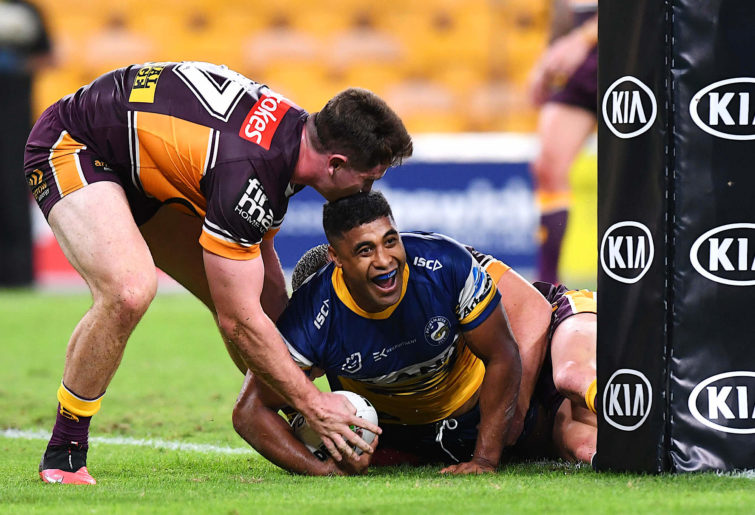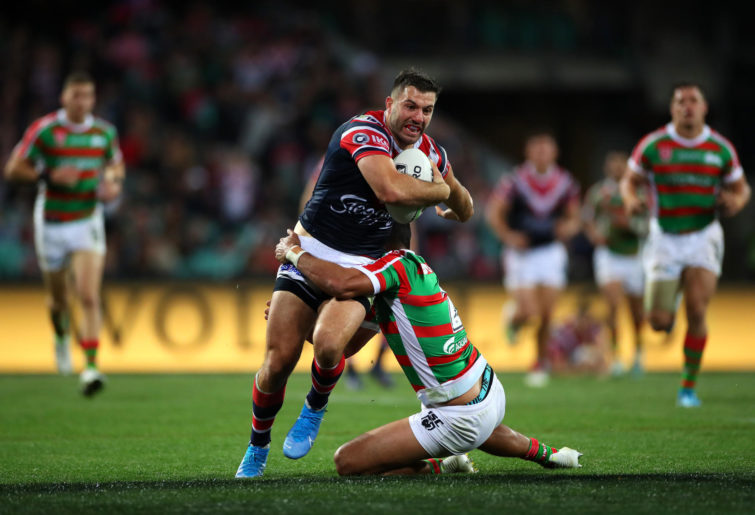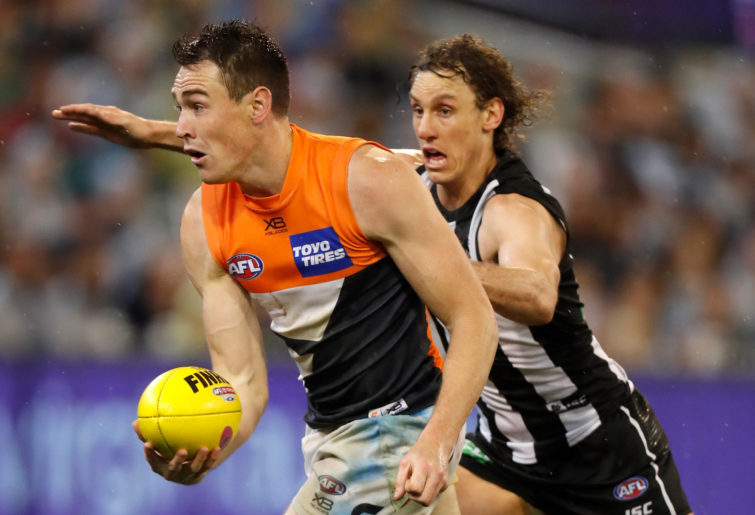andyfnq
new author
Roar Rookie
Opinion
Footy supporters of Australia, we need to talk.
It’s time to confront the uncomfortable truth: we have a problem when it comes to talking about footy.
I’m not talking about sledging officials who are doing a thankless job, or unthinkingly passing judgement on another individual’s worth as a player or a person in public forums.
I’m talking about the insidious, pervasive and increasingly bitter trolling that fans of Australia’s two largest football codes are doing to each other.
Even at this most difficult of times, when football codes are facing an unprecedented struggle to survive, it can be seen in the headlines of our major media mastheads. It can be seen in print and video being expressed by prominent club and code officials. It can be seen in the comment threads of many stories on The Roar itself.
What makes these attacks so unjustified is not just the nature of the abuse that misguided true believers heap on the rival code; it is that the codes, despite both having the tag of “football” to their supporters, are so different they defy objective comparison.
In fact, each code has its strengths and weaknesses, with surprisingly little overlap. The net result? Two incredible football codes that complement each other.

(Photo by Daniel Kalisz/Getty Images)
There was a time, long ago, that I would have scoffed at such a notion. Full disclaimer: I was born and raised in regional Victoria, and the AFL was my object of worship. It is the code I am more familiar with, and if some of my observations on the NRL in this article are simplistic or incomplete, I can only humbly apologise and stand ready for correction.
However, I am not quite the typical southern state AFL apologist. While I am as Victorian as poncy coffee in some laneway café, both my parents were originally from NSW. My mother did not really follow footy of any description (she does now – hi mum!) but my father had played league at school, going on to represent NSW in at a junior level.
This meant that I was not indoctrinated into my code quite as fully as I could have been. I can still vividly remember one day when I had been kicking a footy in the yard, and he came out to teach me and some of my mates how to take a place kick, much to my prepubescent embarrassment and their confusion.
Today, long after his passing, I realise the connection he was making at that moment – kicking a footy with his kid – and it is a treasured memory. But I digress.
Despite appearing to be a single code follower, a part of me remained league-curious. This part was given licence to expand when work took me to rural Queensland and a true NRL heartland, where I have remained these last seven years.
At first, I found the game difficult to follow. What the hell was a five-eighth? How did a family game have a starting position for a hooker? Terms that had once been familiar, like forwards and backs, now seemed to have completely different meanings.
But one night, from confusion came an epiphany. The NRL and AFL complemented each other! It was like something that had been hidden in plain sight, or one of those weird magic eye pictures that I can’t do – once it was spotted, it was obvious.
Every concept that made the game I loved work was stood on its head in league, but this meant that areas of AFL weakness became areas of NRL strength, and vice versa. Two sides of a coin, yin and yang; each code had something incredible to offer.

(Bradley Kanaris/Getty Images)
As I watched the Storm squash Brisbane that night, the revelation was about the entire concept of how the game should be played; something so basic that we often take it for granted.
AFL is predicated on chaos; the game play is designed to ensure that the ball is in dispute or can be won by either team as often as possible. At its best, this leads to fast, exciting ball movement by both hand and foot in a full 360-degree range, where players must expect a physical encounter from any direction.
At its worst, it leads to the congestion and rolling mauls that can blight the modern game. Seeing the ball pinging around like this, particularly when sides are under pressure and cannot take clean possession, must seem at best confusing and at worst laughable to a new viewer with a background in NRL, because in league the opposite is true.
In league, sides take turns having control of the ball. Almost every option to take control from the opposition is nullified by the rules. A simple example is the rule governing stripping. Not related to the hooker position (sorry), this term describes a tackler taking or knocking the ball away from the ball carrier. A tackler making a conscious effort not to attempt to take the ball from the opponent – even if a simple opportunity presented itself – is the best example of how control is key to NRL.
While it can make the play predictable, it also provides an orderly framework for the game – no repeat stoppages with players scrabbling on the ground for the ball. In all occasions, after a stoppage one team is given the ball to re-start the play. Once I learned to appreciate the benefits this provided, the negatives seemed insignificant.
While that was the most obvious flip the codes had, it was just one of many. Both games are a contact sport, but the way contact occurs could not be more different. This is because of the chaos versus structure philosophy each game is built on.

(Photo by Cameron Spencer/Getty Images)
In league, contact is regular and heavy. However, players aren’t injured at a noticeably different rate for the two codes (stats gurus out there, feel free to help me out on this one). This is because in league, players almost always know when and where contact will occur, and often they are the ones initiating it. This means that players hunch up to let their ribs cover as much of their internal organs as possible, tense their muscles for protection, and then use their arms, shoulders and even the ball to take most of the impact. This technique is how NRL players can plow into each other again and again for 80 minutes.
While AFL is a contact sport, that type of full speed collision happens far more rarely during game play. However, two things combine to ensure that players are not safe from devastating impact: the 360-degree nature of game play, and the inherent chaos of the game.
Look at a highlights passage of big AFL bumps (fair and unfair), and you will see that in most cases, the victim has no idea they are about to be bumped. Sometimes it is from behind as they run backwards, sometimes it is when they are picking up the ball from the ground, eyes lowered.
In almost every event, the victim does not intend for contact and is neither braced nor prepared, with muscles loose. If they were trying to mark the ball, they may have had their hands above their head, lifting their ribs and exposing more of their vitals as a target.
So, while league has far more high impact contact, AFL contact of the type described is likely to be highly damaging (and entertaining) when it does occur. Again, when combined, the games have something for everyone – league’s regular heavy but moderately damaging impact complemented by AFL’s regular light/medium contact, with occasional instances of incredibly heavy contact at unpredictable intervals.
One of the most confusing areas can be when both codes use the same word but have a completely different interpretation regarding the purpose of the thing the word describes. There are a few examples of this, but the most glaring example is tackling.

(Michael Willson/AFL Photos via Getty Images)
A successful NRL tackle normally stops an opposition run, and uses up one of their five tackles in a set, eroding the tackled team’s time in control of the ball. While the ball can be turned over in a tackle, this is often down to error by the tackled player losing their grip on the ball. Occasionally a tackled player is forced over the sideline holding the ball; in this case the error lies in the choice to run too close to the touch line.
When tackled, an NRL player’s first instinct is to hold onto the ball at all costs. Offloads (disposing of the ball when tackled) are a high risk/high reward play. While you will see them every week in the NRL, the numbers of offloads per game are meagre compared to the incredible number of completed tackles.
In the AFL, the correct behaviour of the tackled player is completely opposite; they are required to dispose of the ball correctly once they have been tackled in a timely manner (normally a second or two). The only exception to this is a player who is tackled as soon as they take possession of the ball and who have no prior opportunity to dispose of it. This ‘no prior’ is designed to make sure that in a contest a player is not penalised for attempting to take the ball. But it is the rest of the interpretation that is so different.
One code emphasises holding onto the footy when tackled, except in rare circumstances; the other emphasises disposing of the ball as soon as a tackle is applied. This links back to the idea behind each game – AFL says just get rid of it somehow, and if that means to open space then first in best dressed, while NRL says keep control of the ball, reset your lines, and then restart; effectively a free, no-pressure possession for being tackled! Is it any wonder we don’t understand each other?
I could go on. I could talk about the confusion on the face of a school-aged acquaintance in Queensland when I told him I used to play on a flank (a position that doesn’t translate into a square field very well) – an acquaintance who is now carving out a very successful NRL career.
I could talk about the confusion four posts versus two cause, or how blocking an opponent from reaching the ball or your teammate is great play in one code and a penalty in the other.
But I will leave you in my maiden article with the simple appeal: don’t hate on the other footy code. They both have something awesome to offer, and you are unlikely to change any minds by rubbishing their sport.
Instead, let’s celebrate that we have not one but two amazing, highly skilled, physical footy games that are both brilliant, but so different to each other that between them, there’s something for everyone.